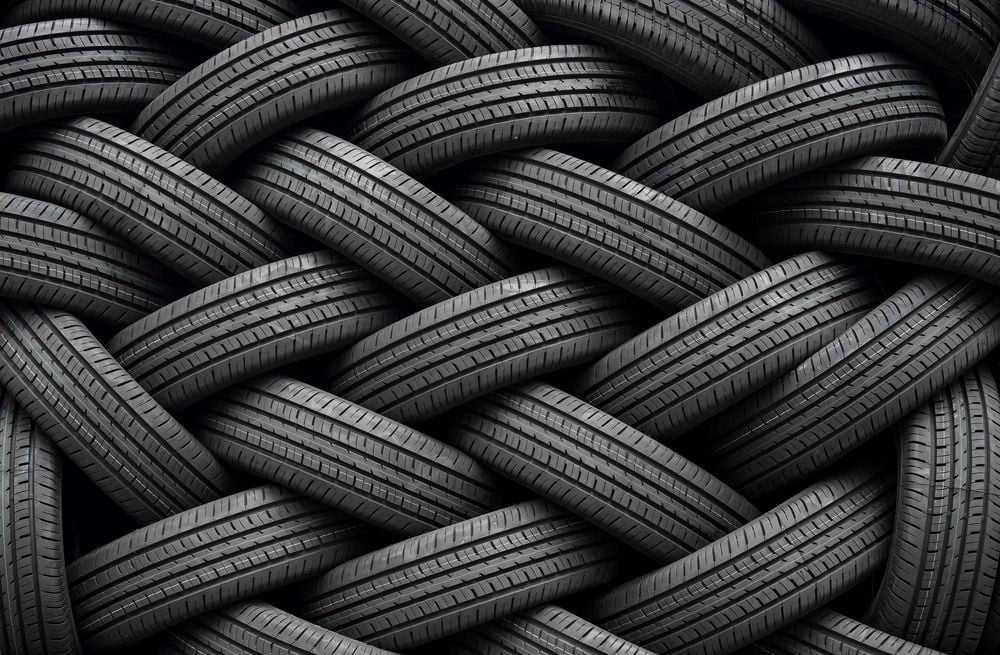How Can Rubber Tubing Be Used In Industrial Processes?

You may not think of rubber tubing as being particularly versatile, but it actually has a wide range of uses in industrial settings. In this blog post, we'll explore some of the ways that rubber tubing can be used in industrial processes, from manufacturing to transportation. We'll also discuss the benefits of using rubber tubing in these applications, such as its resistance to wear and tear, its flexibility, and its ability to withstand high temperatures. So if you're looking for a durable and versatile material for your next industrial project, consider rubber tubing!
What is rubber tubing?
Rubber tubing is a type of tube made from natural or synthetic rubber. It is often used in industrial processes, such as conveying liquids and gasses or creating seals. Rubber tubing can be manufactured in a variety of sizes and thicknesses to suit its intended purpose. Not only is rubber tubing durable and flexible, but it is also resistant to many chemicals and extremes of temperature. For example, silicone rubber tubing can be used to transport hot liquids or gases, as well as used in medical applications where it comes into contact with the human body. This type of tubing is also used in food and beverage applications.
Industrial rubber tubing is used in many applications, everything from automotive manufacturing to the food and beverage industry. It is a versatile material that can be used in a variety of ways due to its unique properties. Plus, industrial rubber tubing is resistant to many chemicals and can withstand extreme temperatures, making it ideal for conveying liquids and gases. It is also flexible yet durable, able to withstand high pressure and vibration. In addition, rubber tubing is non-toxic and inert, making it safe for use in many industries.
On the other hand, natural rubber tubing is often used in applications where its flexibility is an advantage, such as in automotive hoses. It can also be used in lower-temperature applications since it becomes more brittle at colder temperatures. You can use it for a variety of purposes, including:
- Conveying liquids and gases
- Creating seals
- Automotive hoses
- Food and beverage applications
- Medical applications
Keep in mind that different types of rubber tubing are better suited for different applications. Make sure to choose the right type of tubing for your needs in order to avoid any problems. Additionally, always follow the manufacturer's instructions when using rubber tubing to ensure proper and safe operation. For example, some types of rubber tubing may require the use of a clamp to secure it in place. Other types need to be lubricated before use. Not to mention, always inspect rubber tubing for any signs of damage before using it to avoid any accidents. Everything from small cracks to large holes can cause rubber tubing to fail, so be sure to check it over thoroughly. Don't forget the importance of proper storage, too. Rubber tubing should be stored in a cool, dry place out of direct sunlight.
How is rubber tubing made?
Rubber tubing can be made in a variety of ways, depending on the desired properties and applications. The most common method is vulcanization, which involves treating the rubber with sulfur to create cross-links between the polymer chains. This makes the rubber stronger and more resistant to heat and chemicals. Other methods include compression molding and extrusion.
Compression molding is typically used for larger pieces of tubing, such as those used in automotive applications. The rubber is placed in a mold and heated until it is soft enough to be shaped. The mold is then closed and the rubber is allowed to cool and harden. For example, this method is used to create hoses and gaskets.
Extrusion is used to create smaller pieces of tubing, such as those used in plumbing applications. The rubber is melted and forced through a die of the desired shape. It is then cooled and cut into lengths. This method is also used to create seals and gaskets. Many industries use rubber tubing in their products, including the automotive, plumbing, and medical industries.
In addition to the above methods, some companies also use 3D printing to create custom rubber tubing. This method is typically used for small runs of tubing or for prototyping. For example, a company may use 3D printing to create a custom gasket for a new product.
What are the benefits of using rubber tubing?
Rubber tubing is a versatile and reliable product that can be used in a variety of industrial processes. Here are some of the benefits of using rubber tubing:
1. Rubber tubing is durable and can withstand high temperatures, making it ideal for use in high-pressure applications.
2. Rubber tubing is flexible, which makes it easy to route and connect in various configurations.
3. Rubber tubing is resistant to chemicals and other corrosive materials, making it ideal for use in harsh environments.
4. Rubber tubing has a smooth inner surface that reduces friction and wear, making it ideal for use in moving parts.
5. Rubber tubing is available in a variety of sizes and lengths to suit any application.
6. Rubber tubing is relatively inexpensive and easy to obtain.
Keep in mind that rubber tubing is not suitable for every application; it should be chosen based on the specific needs of the project. For example, if you need a tubing material that is transparent, then rubber tubing is not the right choice. On the other hand, if you need a tubing material that can withstand high temperatures or harsh chemicals, then rubber tubing is an excellent choice. Not to mention, rubber tubing is one of the most versatile and widely used tubing materials available on the market.
What are some applications of rubber tubing in industrial processes?
Rubber tubing has a wide range of applications in industrial processes, from conveying liquids and gases to transferring power and data. One of the most common applications of rubber tubing is conveying liquids and gases. Rubber tubing can be used to transport a variety of fluids, including water, air, oil, and chemicals. This type of tubing is often used in plumbing and HVAC applications. Another common application for rubber tubing is transferring power or data. Rubber tubing can be used to connect electrical components or to carry data signals between electronic devices. This type of tubing is often used in computer and telecommunications applications.
Additionally, rubber tubing can be used in a variety of other applications, such as packaging, vibration isolation, and shock absorption. For example, rubber tubing can be used to protect sensitive items during shipping, to reduce vibration and noise in machinery, and to absorb impact in applications such as automotive and sporting goods. Similarly, rubber tubing can also be used as a seal or gasket in applications where a tight, leak-proof seal is required.
How can I get started using rubber tubing in my business?
If you're looking to incorporate rubber tubing into your business or industrial process, there are a few things to keep in mind. First, you'll need to determine what type of rubber tubing is best suited for your needs. There are many different types of rubber tubing available on the market, each with its own unique benefits and drawbacks. Once you've determined the right type of rubber tubing for your application, you'll need to select the correct size. Again, there are many different sizes of rubber tubing available, so it's important to select the one that will best fit your needs. Finally, you'll need to choose the right supplier. There are many different suppliers of rubber tubing, so it's important to do your research and select the one that can provide you with the best quality product at a fair price.
For example, if you need a small amount of tubing for a home project, you might select a different supplier than if you were looking to purchase rubber tubing in bulk for an industrial process. When selecting a supplier, it's important to consider their reputation, customer service, and pricing. Once you've selected the right supplier, you should be able to get started using rubber tubing in your business or industrial process with ease.
When choosing the right rubber for your industry, keep in mind that there are many different types of rubber available on the market. The most common type of rubber is natural rubber, which is made from the sap of certain trees. Synthetic rubber is another option that's made from petroleum products. There are also recycled rubbers, which are made from used tires and other materials. Each type of rubber has its own unique benefits and drawbacks, so it's important to select the one that will best fit your needs.
When it comes to industrial processes, rubber tubing can be an extremely versatile and useful material. It is durable and can withstand high temperatures, making it ideal for a variety of applications. Whether you need to transport liquids or gases, Rubber tubing can be an excellent choice. Keep in mind that there are many different types of rubber tubing available on the market, so it's important to select the one that will best fit your needs.

Ravindra Ambegaonkar
Ravindra, the Marketing Manager at NY Engineers, holds an MBA from Staffordshire University and has helped us grow as a leading MEP engineering firm in the USA
Join 15,000+ Fellow Architects and Contractors
Get expert engineering tips straight to your inbox. Subscribe to the NY Engineers Blog below.


